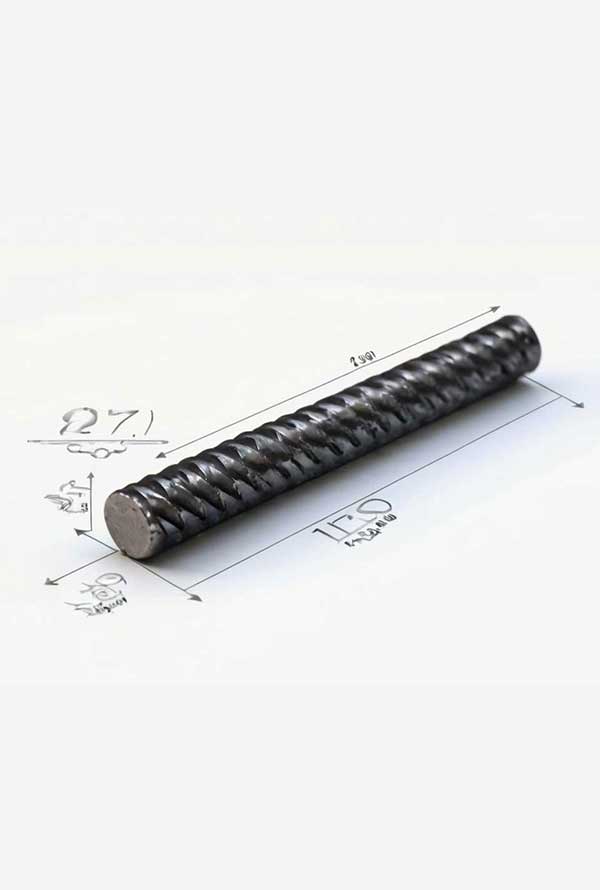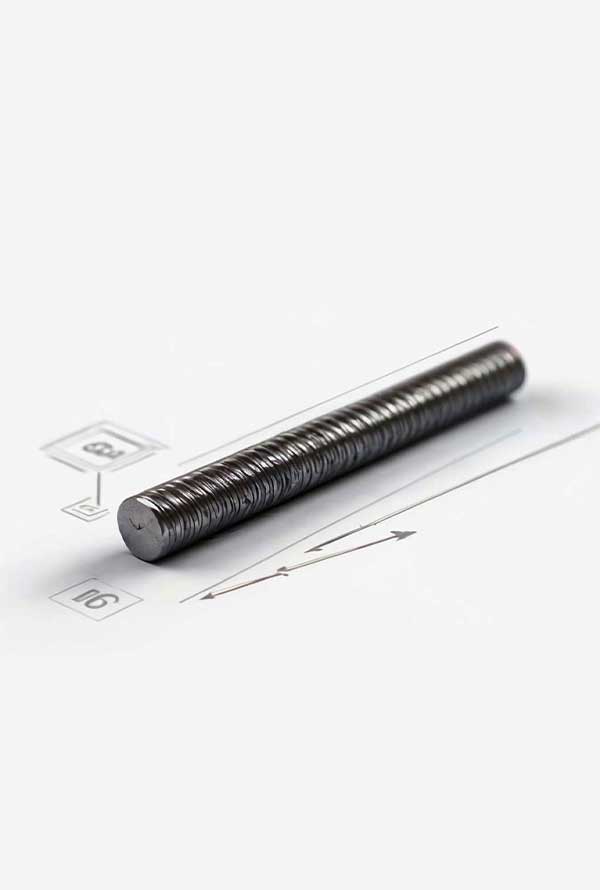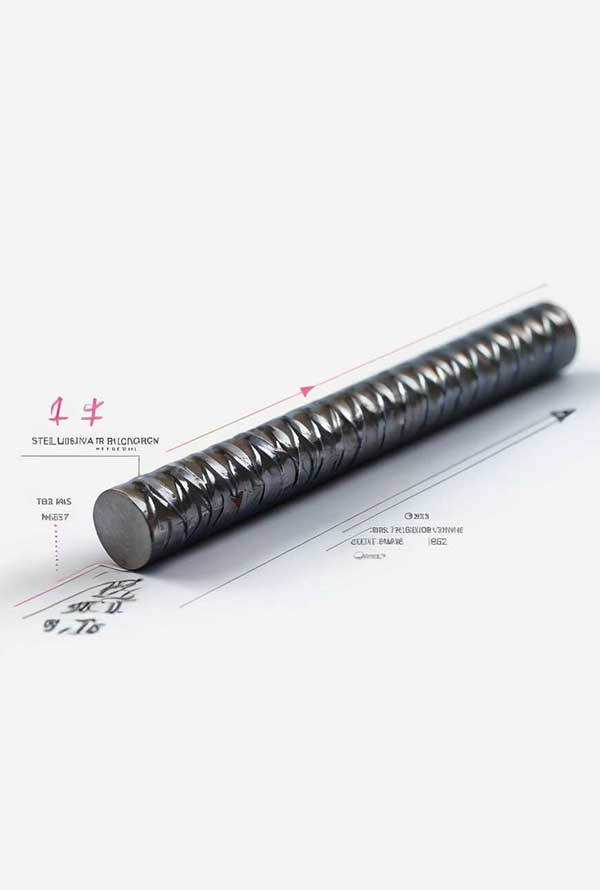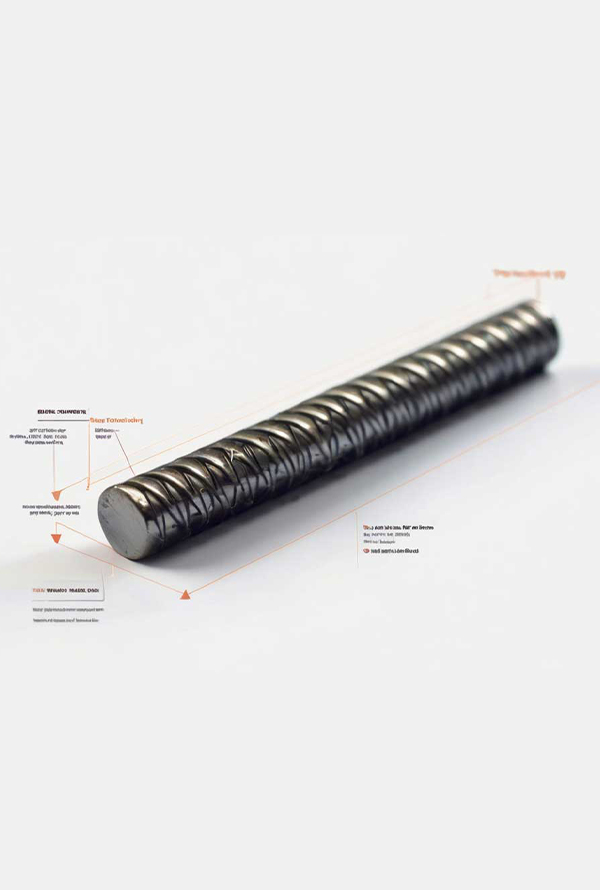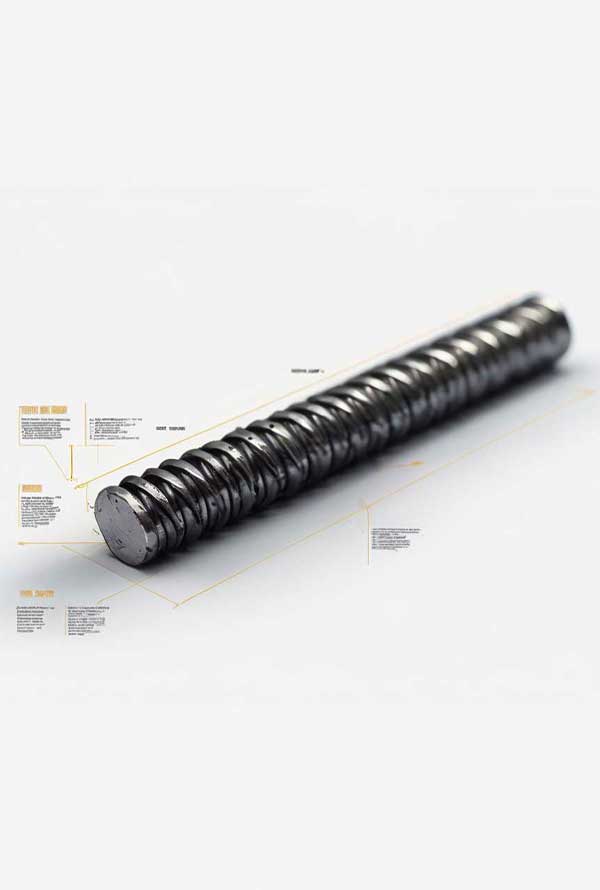The price of Rebar 14, as one of the most widely used steel products in the construction industry, is influenced by various factors, including global steel market fluctuations, domestic supply and demand, exchange rates, and inflation. These factors cause price volatility in the rebar market, making real-time price information essential for buyers.
Price Calculation Method for Rebar 14
The price of Rebar 14 is typically calculated per kilogram. In other words, the cost per kilogram of rebar is multiplied by the total required weight to determine the total product cost.
Factors Affecting Price
Several factors influence the price of rebar. Among these, global steel market fluctuations directly impact domestic rebar prices. Additionally, supply and demand dynamics play a significant role; increased or decreased demand for rebar leads to price fluctuations.
Exchange rates, particularly dollar fluctuations, also affect the final price of rebar due to the steel industry’s reliance on imported raw materials. Finally, inflation serves as a general factor impacting the prices of all products, including rebar.
The Importance of Determining Accurate Rebar Weight
Before purchasing rebar, it is crucial to determine the exact weight of the required product, as the final price is calculated based on weight. Standard rebar weight tables or available computational software can be used to calculate weight.
Technical Specifications and Applications of Size 14 Rebar
Production Standards and Grades for Rebar 14
Rebar 14 is manufactured according to national and international standards and is available in various grades. Each grade has unique technical specifications suitable for specific applications. The table below shows the technical specifications of four common grades of Rebar 14:
| Grade | Rib Type | Yield Strength (MPa) | Tensile Strength (MPa) | Applications | Relative Elongation (%) |
|---|---|---|---|---|---|
| A1 | Plain | 240 | 360 | Suitable for welding, forging, bending | 25 |
| A2 | Spiral ribs (J, L) | 340-350 | 500 | Welding, forging, bending (in critical cases) | 19 |
| A3 | Chevron ribs (C, H) | 400-420 | 600 | Welding, forging, bending prohibited | 14 |
| A4 | Composite ribs (S) | 500 | 650 | Construction of various structures (except shear walls and special moment frames) | 8 |
Explanation of Symbols
- MPa: Megapascal (unit for measuring stress)
Applications of Size 14 Rebar
Some of the most important applications of this rebar include:
- High-rise buildings
- Parking structures
- Bridges
- Industrial facilities
- Structural columns (reinforcement)
- Various joists
- Foundation construction
- Concrete beams (reinforced concrete structures)
Other Applications:
- Highway guardrails
- Docks
Choosing the Right Grade
Selecting the appropriate grade of Rebar 14 depends on various factors such as the type of structure, loading conditions, environmental conditions, and design requirements. It is recommended to consult the project’s supervising engineer for proper selection.
Comprehensive Guide to Buying Rebar 14
To choose and purchase high-quality and reasonably priced Rebar 14, consider the following points:
Determine the Appropriate Size and Grade
Size: The size of rebar is determined based on structural calculations and project needs.
Grade: The grade (e.g., A3) is chosen based on required mechanical properties and intended use.
Review Current Prices
Reliable Sources: For updated prices of Rebar 14, check reputable steel sales websites or consult sales experts from trusted companies like Ahannin Aflak.
Price Changes: Rebar prices may change daily due to various factors such as global steel market fluctuations, exchange rates, and supply-demand dynamics.
Choose a Reputable Supplier
Quality and Authenticity: To ensure quality and authenticity, purchase rebar from well-known and reputable centers.
After-Sales Services: Reliable companies usually offer excellent after-sales services and are ready to assist with any issues.
Seek Professional Advice
Sales Experts: Experts from reputable companies like Foolad Sirjan Hadid provide specialized advice on selecting the appropriate size, grade, and quantity of rebar based on your project needs.
Technical Specifications of Rebar 14
| Feature | Value | Description |
|---|---|---|
| Nominal Diameter | 14 mm | Diameter of the rebar cross-section |
| Yield Stress | 4000 kg/cm² | Maximum force before permanent deformation |
| Ultimate Strength | 6000 kg/cm² | Maximum force causing rebar failure |
| Rib Type | Various | Rib patterns on the rebar surface (spiral, chevron, etc.) |
| Weight (per 12m) | Approx. 14.5 kg | Approximate weight of a 12-meter rebar |
Identification Codes on Rebar 14
Size 14 rebars may have codes indicating grade, rib type, and production method. Some common codes are:
| Code | Rebar Grade | Rib Type | Production Method |
|---|---|---|---|
| SA | A4 | Ribbed 500 | As per product specifications |
| JU | A2 | Ribbed 340 | Microalloying method |
| JT | A2 | Ribbed 340 | Thermex (cooling method) |
| CU | A3 | Ribbed 400 | Microalloying method |
| CT | A3 | Ribbed 400 | Thermex (cooling method) |
Further Explanation
- Rebar Grade: Indicates the mechanical properties of the rebar. Each grade specifies specific yield and tensile strength.
- Rib Type: Impacts the bond strength between rebar and concrete, thereby affecting structural resistance.
- Production Method: Influences the final properties of the rebar.
Rebar 14 Production Process
After extracting raw materials and completing the initial steel production phases, steel billets are used as the primary raw material for producing rebar. Different methods are used to produce rebar of various sizes, including size 14, each with its features and applications.
Main Production Methods for Rebar
Four main methods are generally used for producing rebar size 14 and others:
- Hot Rolling: Steel billets are heated to high temperatures and passed through rolling mills to form rebar. This is the most common method.
- Cold Rolling: Steel billets are rolled at ambient or lower temperatures, producing rebar with smoother surfaces and precise dimensions.
- Microalloying: A minimal amount of alloying elements is added to steel to enhance its mechanical properties, resulting in higher tensile and yield strength.
- Thermex: Rebar is rapidly cooled after hot rolling to improve its mechanical properties.
Weight Variations in Rebar 14 Across Different Manufacturers
Rebar weight may slightly vary depending on the manufacturer and production method. These differences in weight do not necessarily imply differences in quality.
Mechanical Properties of Rebar Size 14
Mechanical properties describe a material’s behavior under external forces, critical for selecting appropriate construction materials like rebar.
Important Mechanical Properties in Rebar 14
- Tensile Strength: Maximum force a rebar can withstand before breaking.
- Bond Strength: Ability to form a strong bond with concrete.
- Hardness: Resistance to penetration and localized deformation.
- Ductility: Ability to deform plastically without breaking.
- Fatigue Strength: Resistance to repetitive loads without failure.
- Corrosion Resistance: Resistance to corrosive factors like water, humidity, and chemicals.
Conclusion
To purchase Rebar 14 at the best price and quality, choosing a reliable provider like Foolad Sirjan Hadid guarantees success in your construction and industrial projects. Take advantage of our specialized consultation and professional after-sales support to ensure a confident and informed choice.
